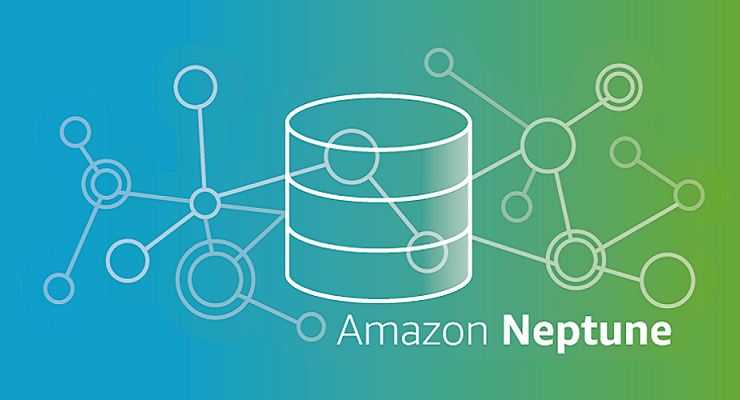
Relational databases move with recording fields of knowledge and one-to-many connections, graph databases are optimized to trace many-to-many relationships, like social networks and conception networks. It supports variety of various and evolving standards for representing data and complicated networks as graphs and has recently else hooks for a Graph Store Protocol, open Cypher, Neptune ML, and TinkerPop brownie to its big selection of supported Apis.
What is Amazon Neptune?
Amazon Neptune could be an absolutely managed graph information that produces it straightforward to create and run applications that employment with extremely connected datasets. Graph databases store giant collections of relationships between objects, people, concepts or the other entity that may be depicted in a very information. Amazon Neptune simplifies the process for a developer to write queries that can search connected data points with low latency. The core of Amazon Neptune could be a purpose-made, superior graph information engine optimized for storing billions of relationships and querying the graph with milliseconds latency.
Running on the AWS cloud, it’s a crucial new member within the more and more competitive field of graph databases. Notably, Amazon is specializing in group action AI routines from the company’s AI service SageMaker to AWS Neptune. That’s meant to make a hybrid tool that each stores and analyzes knowledge.
Features of Amazon Neptune
- Suits OFFICIAL
- Available in three EU regions together with London, and internationally
- NCSC Cloud Security Principles aligned, Security Cleared (SC) employees out there
- Connectivity options: N3, HSCN, PSN, Police (ex-PNN)
- Deploy into machine-driven Infrastructure-as-a-Service (IaaS), Platform-as-a-Service (PaaS) architectures
- High Performance and quantifiability – High turnout, Low Latency
- Open Graph APIs: Property Graph, Apache, TinkerPop, Gremlin
- Network Isolation, Resource-Level Permissions, Encryption, Advanced Auditing

Benefits
- Amazon Neptune supports open graph Apis for brownie and SPARQL
- High performance and quantifiability – Optimized for process graph queries
- High convenience and sturdiness, ACID (Atomicity-Consistency-Isolation-Durability) compliant
- Training and subject area patterns/guidance (well architected)
- Multiple levels of security, together with network isolation exploitation Amazon VPC
- Automatically and unceasingly monitors and backs up your information.
Some of the natural use cases for Neptune graph databases are:
- Fraud detection
Criminal behavior often falls into a predictable pattern, and graph databases are useful for finding patterns based on connections between events. A series of bad events using the same physical or IP address, for example, could lead to flagging future events with the same addresses for scrutiny.
- Knowledge graphs
One of the more sophisticated options is to create a network of relationships between abstract ideas, thoughts, and concepts. This can act as the foundation for more sophisticated search algorithms, language translation, or other forms of artificial intelligence.
- Recommendation engines
If the graph can link similar items, a simple algorithm can offer users help finding new friends or potential purchases by following these links.
- Money laundering monitors
Some regulations ask financial institutions to track the flow of currency to help prevent crime. Graph databases are natural options for modeling transactions and detecting net flows.
- Contact tracing
Epidemiologists often work to control the spread of disease by tracking how and when people meet and interact. Graph databases often have algorithms for tracing the flow through multiple hops.
Neptune supports the two major conceptual models for graph data processing (property graph and RDF) and the various query languages for each of them. Users can choose a particular model when creating the database tables, but these are not easily interchangeable after creation.
Developers have variety of choices for operating with Neptune. Information may be inserted or queried with any of those protocols:
- Gremlin, for accessing property graph information, from the Apache TinkerPop project.
- OpenCypher, an alternative choice for querying property graph information, from Neo4J databases.
- SPARQL, for looking out RDF information, from the W3C.
- Bolt, a binary version of the OpenCypher protocol, from Neo4J.

AWS Neptune is additionally designed like alternative Amazon databases to cover a lot of the complexness of putting in the code or scaling it effectively. The service can replicate information to form scan replicas across datacenters and accessibility zones. Backups may be triggered mechanically to S3 buckets. If any node fails, alternative replicas will take over mechanically.
I hope you find this blog helpful. There is more to learn, keep exploring.
Thank you!!
- Best AI tools for Software Engineers - November 4, 2024
- Installing Jupyter: Get up and running on your computer - November 2, 2024
- An Introduction of SymOps by SymOps.com - October 30, 2024

